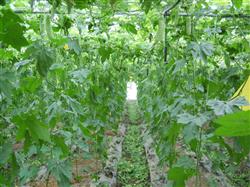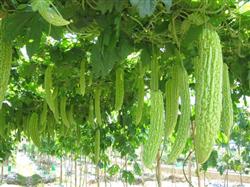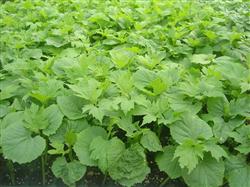How to plant balsam pear in succession?

How to plant balsam pear in succession? Please give guidance and methods. First of all, we should pay attention to timely prevention and control of diseases and insect pests. The resistance of balsam pear decreased in the middle and later stage, and the possibility of infection of diseases and insect pests increased, so prevention should be carried out in advance. At present, the main disease harmful to balsam pear is powdery mildew, which can be controlled by spraying 12.5% nitrilazole EC 2000 times or 12.5% terprazole wettable powder 1500 times and 62.25% Xiansheng wettable powder. With the increase of temperature, the virus disease will also become a disease harmful to balsam pear. We should pay attention to adjust the temperature, do a good job of insect control, and prevent it with 500 times of virus An and 300 times of nanomycin in advance. Here a special mention of balsam pear yellow leaves. Once the occurrence of yellow leaves, balsam pear sitting ability is low, melon strips are small, serious even no longer sit melon, vegetable farmers suffer serious losses. In fact, it is a physiological disease, which is mainly caused by continuous cropping, root injury, variety degradation and other factors. The solution is to make early prevention: first, before planting balsam pear, be sure to disinfect the whole shed at high temperature and turn the soil deeply. Second, vegetable farmers are advised to buy hybrid varieties and stop using their own seeds, because after seven or eight years of cultivation, the varieties have degraded and their resistance has decreased. Third, qualified vegetable farmers can graft balsam pear, so that the root system is more developed and the incidence of disease is reduced. Secondly, water and fertilizer must keep up. As the temperature rises, the plant growth increases, which requires that the supply of fertilizer and water must be adequate, and balsam pear likes the humid environment, generally watering once every 7 to 10 days, and applying some high-grade water-soluble fertilizers, such as Leba, potash Leduo, etc., with 5kg per mu, the fertilizer can not only provide the nutrition needed for balsam pear growth, but also conducive to rooting and strong seedlings. Later, as the temperature rises again, the evaporation in the shed increases, and the watering time should be shortened appropriately. If the plant has serious yellow leaves, 500 × 800 times aromatic foliar fertilizer can be sprayed once every 7-10 days, combined with 500-fold root irrigation, to promote root growth, supplement the nutrients needed for balsam pear growth, and effectively delay the senescence of balsam pear plants. Once again, pay attention to the removal of excess vines. In the middle and later stage of balsam pear growth, there are lots of branches and vines. If not pruning and pruning in time, not only nutrition will be consumed, but also field canopy will be closed and nutrients can not be supplied centrally, resulting in poor growth and reduced stress resistance of balsam pear. Click to get more balsam pear planting techniques click to get more vegetable planting techniques
- Prev

How to manage bitter melon planting?
How to manage bitter melon planting? Please guide the management method of planting bitter melon can refer to the following methods for management: First, select improved varieties. Select fertilizer tolerance, heat resistance, storage and transportation tolerance, melon type, melon meat thick, high yield, good quality varieties, such as Zaofeng No. 3, Cuicui No. 1, Suiyou, Lvbaoshi, Dading bitter gourd, Jiangmen...
- Next

How to plant grafted seedlings of balsam pear?
How to plant grafted seedlings of balsam pear? Please give a detailed introduction to balsam pear grafted seedling cultivation can refer to the following methods: first, select suitable rootstock and scion varieties choose melon varieties with good affinity and strong stress resistance as rootstocks, Yunnan black seed pumpkin and local grinding plate pumpkin are suitable at present; scion varieties are generally selected.
Related
- Where is it suitable to grow horseradish in China? it is expected to see the middle altitude horseradish in Alishan.
- How to prevent tomato virus disease reasonably? (Control methods included)
- Many people like to plant towel gourd on the balcony. What are the main points of this method and management?
- What crops can chili peppers be mixed with?
- Fertilization techniques and matters needing attention in Tomato
- What are the grafting techniques for peach seedlings in spring?
- Harm and control methods of root swelling disease of Chinese cabbage
- What are the pests of sweet potatoes? How to prevent and cure it?
- Symptoms, causes and Control methods of navel Rot in Tomato
- The cause of "Cucumber rotten bibcock" in Farmers' planting Cucumber and its Control Plan

